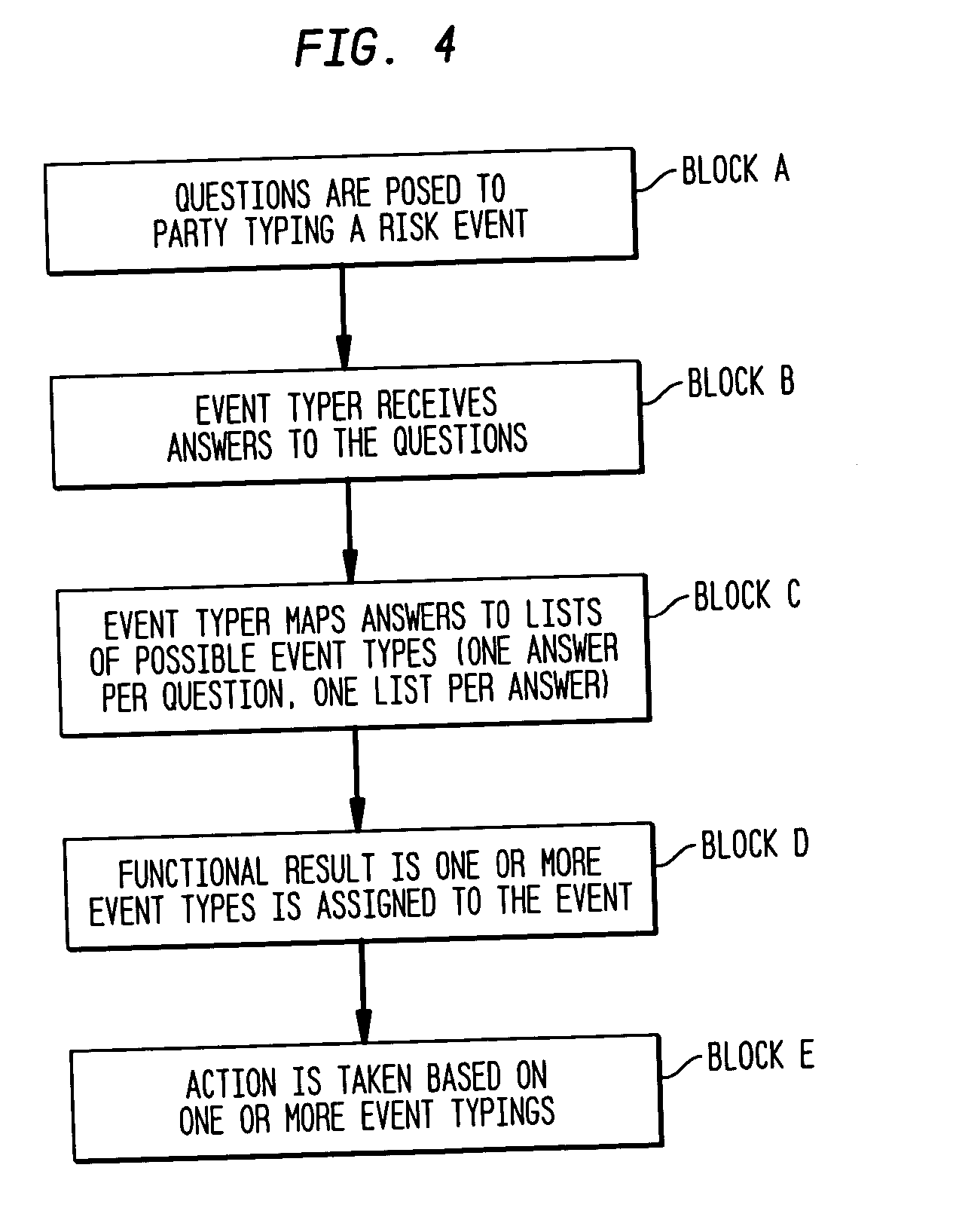Event typer
- Summary
- Abstract
- Description
- Claims
- Application Information
AI Technical Summary
Benefits of technology
Problems solved by technology
Method used
Image
Examples
second embodiment
In one embodiment, the questions and their corresponding answers are independent of the other questions. After the answers to each question are mapped to lists of event types (each list corresponding to one answer to each question), the resultant event is determined by finding the event types that are common to all mappings. Preferably only one event type results from the elimination process. In a second embodiment, there can be additional logic recognizing that choices to previous questions can in some cases limit the field of possible answers to successive questions. Disallowed answers to successive questions can be disabled or removed. For example, some of the list of possible answers can be “grayed out” such that they are still visible to the user, but inactive and not available for selection. Or, the logic could cause the list of possible answers to successive questions to become truncated depending on one or more previous answers or combinations of previous answers.
Each quest...
example 1
Although notified in advance of the need to exercise an expiring option, the client representative became distracted and failed to make the call. The client refused to recognize the exercise when it was finally made several hours late.
Question 1: Who (What) Initiated the Event?
=>Answer (A1): Employee (Internal)
A1 mapping to possible event types: Theft / Fraud (internal); Unauthorized Trading; Personal Safety; Employee Relations; Diversity / Discrimination; Malicious Damage; Disclosure, Suitability & Fiduciary; Improper Business Practices (by firm); Tax Violation; Advisory Activities; Sponsorship & Selection; Regulatory Monitoring / Reporting; Transaction Processing; and Client Account Error.
After only answering one question, the list of possible event types is as listed above, and cannot yet be further limited.
Question 2: What was Benefit to Initiator? (What was Initiator's action directed to achieve?)
=>Answer (A2): No Benefit Intended / Mistake A2 mapping to possible event type...
example 2
A terminated employee filed suit, claiming she was guaranteed a salary and bonus during the year. But in fact she was dismissed in a merger-related downsizing and offered a smaller severance package. A1: Employee (Internal); A2: Benefit to Firm; A3: Employee; A4: Financial (indirect, to client / 3rd Party) Task; A5: Employer—Event Type: Employee Relations.
PUM
 Login to view more
Login to view more Abstract
Description
Claims
Application Information
 Login to view more
Login to view more - R&D Engineer
- R&D Manager
- IP Professional
- Industry Leading Data Capabilities
- Powerful AI technology
- Patent DNA Extraction
Browse by: Latest US Patents, China's latest patents, Technical Efficacy Thesaurus, Application Domain, Technology Topic.
© 2024 PatSnap. All rights reserved.Legal|Privacy policy|Modern Slavery Act Transparency Statement|Sitemap



